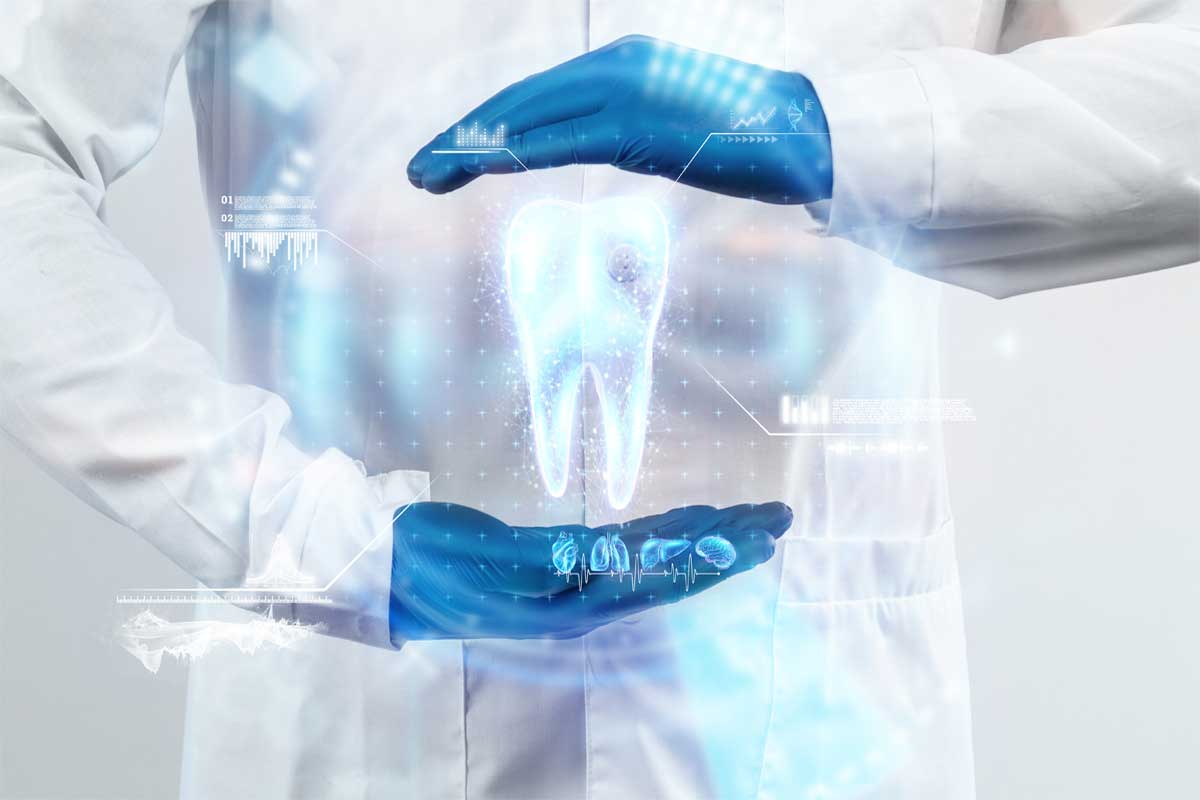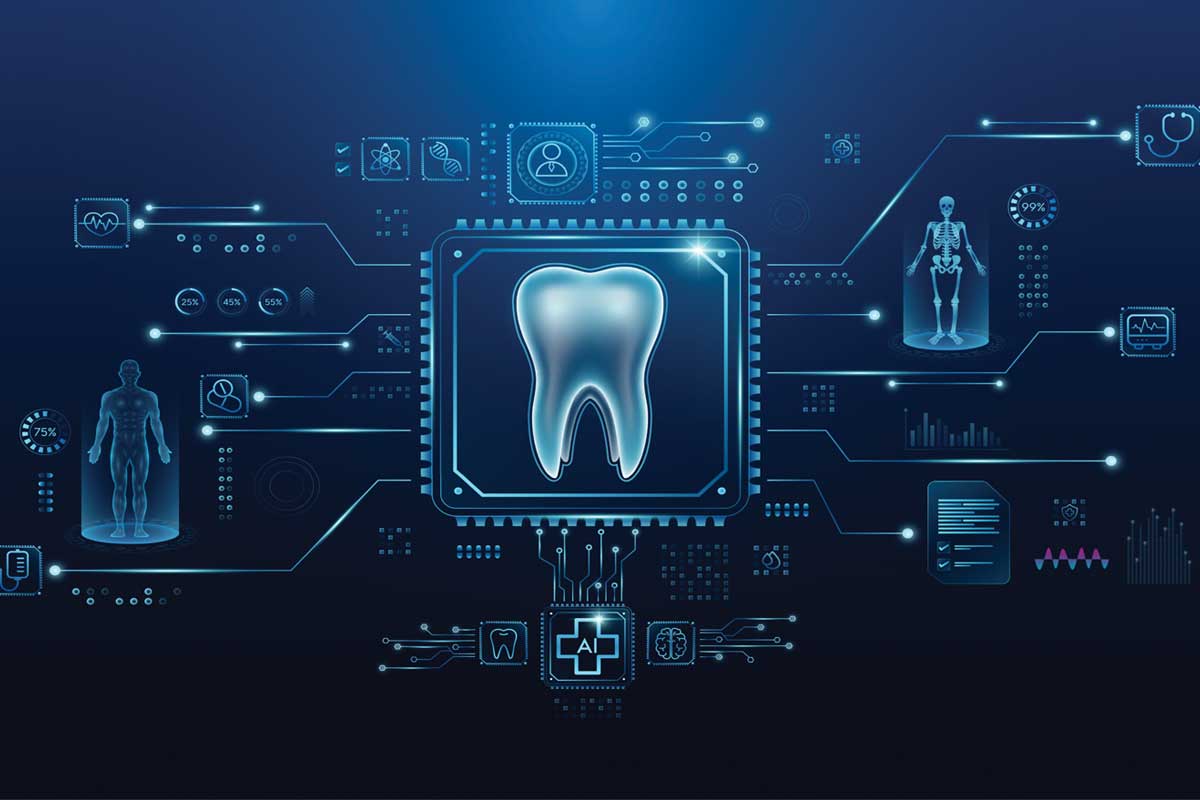
The Internet of Things (IoT) is transforming virtually every aspect of our lives, including healthcare. Heart monitoring devices, connected inhalers, and even connected contact lenses allow healthcare providers to enhance their reach outside the clinical setting.
Now, IoT is making advancements in dentistry, offering care that is smarter and more centered on the patient’s experience, which also leads to brighter smiles. Here, we’ll explore how dentistry is adopting IoT, the problems it can help dentists solve, the technologies being developed, and the challenges associated with this innovative approach.
Tooth Decay Detection
Tooth decay and gum disease are issues that often go unnoticed until they reach an advanced stage that demands more extensive treatments. Smart dental imaging technologies can detect early signs of tooth decay and gum disease using advanced sensors. Dentists can access detailed, real-time images of a patient’s teeth and gums, enabling them to identify and address cavities or gum inflammation in their infancy, minimizing the need for invasive procedures.
VideaHealth has launched a dental AI platform that uses an algorithm trained on a dataset of hundreds of millions of data points, surpassing the number of X-rays seen by most dentists in their entire professional lives by more than 50 times1. VideaHealth says its FDA-approved platform has seen real-world results, including a 31% increase in tooth decay detection over human observation. This advanced system also offers tailored treatment recommendations based on its comprehensive learning.
Dental Anxiety
Dental anxiety is a common deterrent to regular dental check-ups for certain patients, leading to delayed treatments and worsened oral health. Virtual Reality (VR) therapy, powered by IoT, is emerging as a solution to alleviate dental anxiety. VR headsets transport patients to calming environments during procedures, making dental visits more tolerable. This technology enhances the overall patient experience and encourages regular check-ups by mitigating anxiety.
Patterson Dental, a vendor of dental equipment, professional services, and software, has introduced OperaVR, a platform designed to ease patient anxiety through 60 immersive experiences2. Patients can choose between visiting a coral reef or a day at the beach with VR headsets featuring stereoscopic 3D, which helps calm and keep the patients still during procedures.
Oral Hygiene
Patients often struggle with maintaining consistent and effective oral hygiene habits. But smart toothbrushes and interactive apps can track brushing habits. Patients receive real-time feedback on their techniques and can set personalized oral care goals. This fosters better habits and empowers individuals to take control of their oral health.
Companies like BrushLink are at the forefront of developing connected toothbrushes3. These devices attach to toothbrushes, turning them into smart brushes. Its Brushlink Pro is a sonic toothbrush with Brushlink technology already integrated within. These innovations leverage IoT to track brushing habits, providing users insights into their oral hygiene routines. Dentists can then use this data to tailor advice and recommendations for better dental care.
Dental Protection
Athletes in contact sports run the risk of traumatic dental damage, but a new generation of smart mouthguards can help. Going beyond basic dental protection, some innovations feature multiple technologies designed to enhance the player’s performance and experience.
Orb Innovations is another player in the IoT dental space, offering smart mouthguards that track physiology and biometrics4. Its Smartguard monitors heart rate by using light to measure changes in blood vessels and impact locations and sizes so players can improve their defense. The device also tracks steps, distance traveled, and movement intensity, all with technology that connects to smartphones or popular fitness apps.

Dental Implants
Dentists use implants as a more permanent alternative to dentures and bridges to replace teeth lost due to gum disease, trauma, or decay. But implants don’t always live up to their intended purpose and may need early replacement due to periodontal disease or inflammation.
Researchers at the University of Pennsylvania are making groundbreaking strides in developing smart dental implants that resist bacteria with two technologies5. The first uses nanoparticle-infused biofilm that resists bacterial growth. The implants also generate electricity from an embedded light source for phototherapy. Its piezoelectric qualities generate power from motions like chewing or brushing teeth, promoting periodontal health in surrounding tissue.
Challenges of IoT in Dentistry
While the integration of IoT in dentistry holds immense promise, it also comes with challenges:
Data Security and Privacy Concerns
The collection and storage of sensitive patient data raises concerns about security and privacy. Manufacturers and healthcare providers must implement robust cybersecurity measures to safeguard patient information.
Standardization and Interoperability
As various IoT devices enter the dental market, ensuring seamless communication and compatibility among different technologies can be challenging. Standardization efforts are essential to maximize the effectiveness of interconnected devices.
Professional Adoption and Training
The successful implementation of IoT in dentistry requires dentists and healthcare professionals to adapt to new technologies. Training programs and educational initiatives are crucial to ensure practitioners can fully utilize the potential of these advancements.
Outlook for Smarter Dentistry
As IoT technology advances in dental care, we can anticipate highly personalized treatment plans, addressing individual needs and promoting preventive care. Remote monitoring and teledentistry will allow dentists to provide guidance and interventions without the need for frequent in-person visits, benefiting those who live in remote or underserved areas. This technology will also enhance patient engagement by way of gamification and interactive features that can make dental care more enjoyable and encourage healthier habits.
How Ambiq is Contributing
Smarter dentistry that recognizes teeth decay and gum disease are data based and will require an embedded chip capable of handling complex inferencing tasks that provide insight into oral health. Ultra-low power System-on-chips (SoCs) from Ambiq® are capable of handling smart inferencing tasks at 10X lower power with extended battery life that can go up to days, weeks, and months on a single charge. See the applications of Ambiq here.
Sources
1 VideaHealth| 2023
2 Patterson Dental | 2023
3 Brushlink | 2023
4 Orb Innovations | 2023
5 Researchers Build a Smart Dental Implant that Resists Bacterial Growth | February 17, 2023


